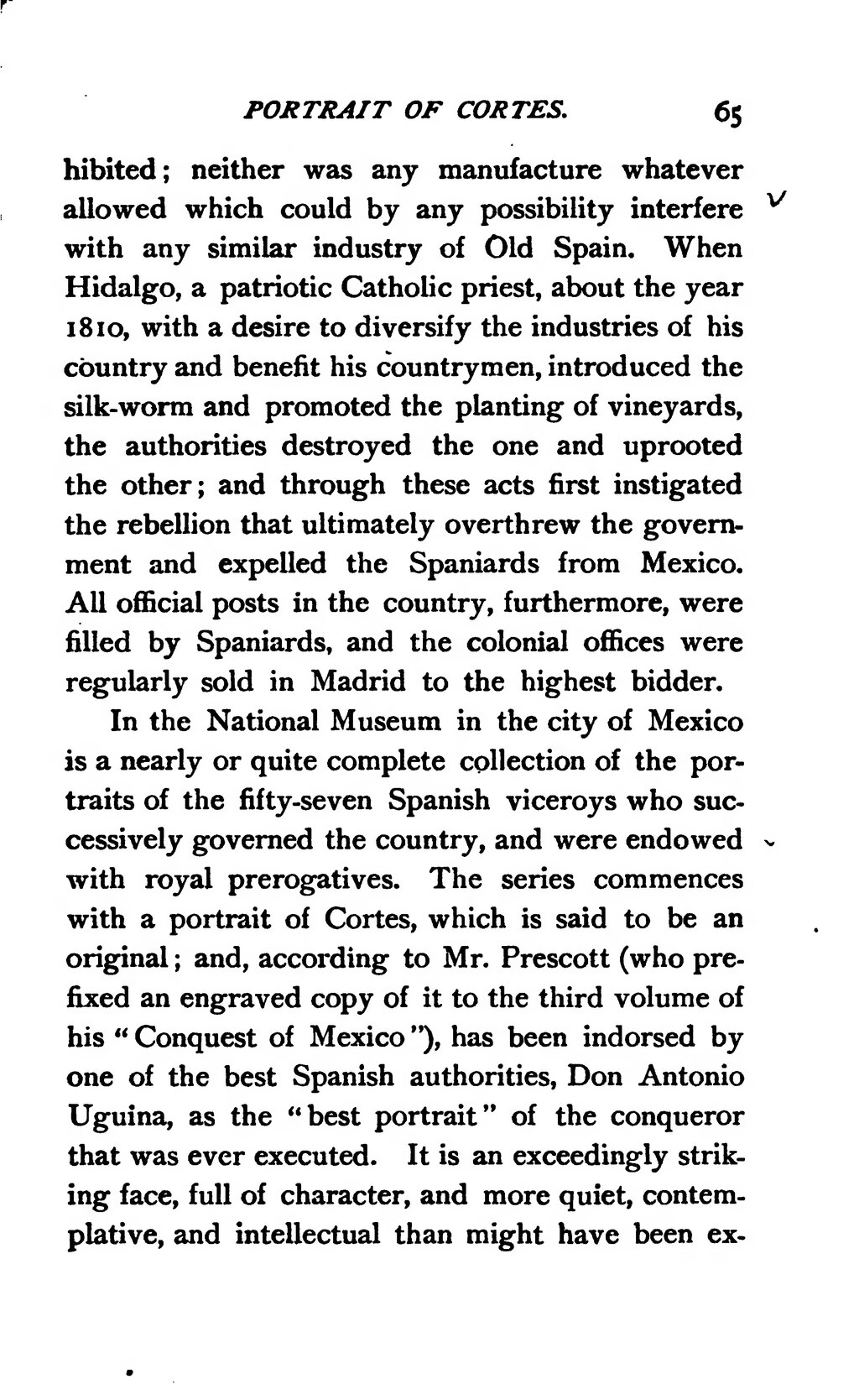hibited; neither was any manufacture whatever allowed which could by any possibility interfere with any similar industry of Old Spain, When Hidalgo, a patriotic Catholic priest, about the year 1810, with a desire to diversify the industries of his country and benefit his countrymen, introduced the silk-worm and promoted the planting of vineyards, the authorities destroyed the one and uprooted the other; and through these acts first instigated the rebellion that ultimately overthrew the government and expelled the Spaniards from Mexico. All official posts in the country, furthermore, were filled by Spaniards, and the colonial offices were regularly sold in Madrid to the highest bidder.
In the National Museum in the city of Mexico is a nearly or quite complete collection of the portraits of the fifty-seven Spanish viceroys who successively governed the country, and were endowed with royal prerogatives. The series commences with a portrait of Cortes, which is said to be an original; and, according to Mr. Prescott (who prefixed an engraved copy of it to the third volume of his "Conquest of Mexico") has been endorsed by one of the best Spanish authorities. Don Antonio Uguina, as the "best portrait" of the conqueror that was ever executed. It is an exceedingly striking face, full of character, and more quiet, contemplative, and intellectual than might have been ex-

